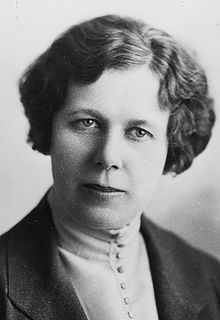Gladys Pyle
| Gladys Pyle | |
|---|---|
 |
|
|
United States Senator from South Dakota |
|
|
In office November 9, 1938 – January 3, 1939 |
|
| Preceded by | Herbert Hitchcock |
| Succeeded by | Chandler Gurney |
| Secretary of State of South Dakota | |
|
In office January 4, 1927 – January 6, 1931 |
|
| Governor | William Bulow |
| Preceded by | Clarence Coyne |
| Succeeded by | Elizabeth Coyne |
| Member of the South Dakota House of Representatives | |
|
In office 1923–27 |
|
| Personal details | |
| Born |
October 4, 1890 Huron, South Dakota, U.S. |
| Died | March 14, 1989 (aged 98) Huron, South Dakota, U.S. |
| Political party | Republican |
| Alma mater | Huron University |
| Religion | Presbyterianism |
Gladys Pyle (October 4, 1890 – March 14, 1989) was a South Dakota politician and the first woman elected to the United States Senate without having previously been appointed to her position; she was also the first female senator to serve as a Republican and the first female senator from South Dakota. She was also the first unmarried female senator.
She was born to John and Mamie (Shields) Pyle and graduated from Huron College in 1911. She taught in the public high schools at Miller, Wessington, and Huron from 1912 to 1918. In 1923 she became first woman member of the State House of Representatives, serving from 1923–1927. Pyle then served as Secretary of State of South Dakota from 1927–1931 and ran unsuccessfully for the Republican Party (GOP) nomination for governor in 1930, garnering nearly a third of the vote in the primary but losing after seven recounts of the votes. She was a member of the State securities commission from 1931–1933. She engaged in the life insurance business in private life.
Gladys, her mother Mamie, and two sisters were very involved in the Women's Suffrage movement and frequently hosted meetings of the local chapter in their house.
On November 8, 1938 she was elected as a Republican to the United States Senate to fill the vacancy caused by the death of Peter Norbeck.
Pyle took a circuitous route to the U.S. Senate, shaped by tragedy and peculiarities in South Dakota election laws. In late December 1936, Progressive-Republican Senator Peter Norbeck of South Dakota died after a long illness. Outgoing Democratic Governor Tom Berry, who had been defeated by a Republican in the November elections, quickly appointed Democrat Herbert Hitchcock to fill the vacancy. However, by state law, Hitchcock had to step down once the next regularly scheduled general election took place in November 1938. While a new Senator would be elected for the full term from 1939–1945, technically the seat would remain vacant from November 1938 until a successor was sworn into office in January 1939. The 75th Congress (1937–39) had adjourned in June 1938 to prepare for the elections, and it was customary that it would not reconvene until the start of the 76th Congress (1939–41) in January 1939. Normally, such a vacancy would provoke little concern. But as the 1938 elections took shape, rumors swirled that President Roosevelt would call for a special session after the elections to capitalize on the existing Democratic margins in both chambers of Congress. In response, the South Dakota Republican Party, which dominated the congressional delegation, pushed for a special election and sought a candidate to fill the two-month term. GOP candidate Chandler Gurney had won the nomination for the full term, but state laws prevented his name from appearing twice on the ballot.
...
Wikipedia
